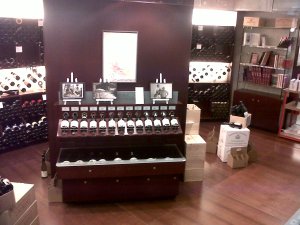There is a pub near us which intermittently has a board outside, advertising the fact that they have Cloudy Bay Sauvignon Blanc in stock. It saddens me firstly that a pub, in a beautiful location alongside the Thames, feels it needs Cloudy Bay to draw people in, but most of all what a draw Cloudy Bay has become.
I’m not necessarily knocking the wines (although I wasn’t bowled over by a recent tasting of the 2009 Sauvignon Blanc), but I will happily stick my head above the parapet and claim that there are a whole host of other New Zealand Sauvignons out there that are not only better, but also much better value. I’m personally don’t think Cloudy Bay delivers enough to justify its £17.99 price tag.
In certain circles, Cloudy Bay seems to have become a benchmark for the Marlborough region. However, it’s debatable how much of its cult status is more the result of clever marketing: the brand was bought in 2003 by ‘luxury goods firm’ LVMH (Louis Vuitton Möet Hennessy).
Anyhow, below are notes on a couple of NZ Sauvignon Blancs from the Marlborough region that we first enjoyed on a trip to Auckland last year. Both are available in the UK, and well worth trying as an alternative to Cloudy Bay. Over the coming weeks, I’ll also be adding notes on other New Zealand wines, made from grape varieties other than the ubiquitous Sauvignon Blanc.
Clos Henri Sauvignon Blanc 2007
We first tried this, drinking out of mugs in a wonderfully chintzy motel near the Bay of Islands, to the north of New Zealand. Perhaps an illustration that a great wine will shine through, despite! Clos Henri was established in the Wairau Valley in Marlborough by the family of Henri Bourgeois, the renowned Sancerre producer. The first vintage was produced in 2003.
Although this bottle was almost three years old, the wine had lost none of its freshness. A powerful nose of mango and papaya, which was also reflected on the palate. A wonderfully complex wine with intense flavours of mango, papaya, gooseberries and green pepper, with a crisp minerality on the finish. Overall, a well balanced wine, with lovely well-rounded fruit and a zippy acidity. (18/20)
The Ned Sauvignon Blanc 2009
We came across this one in the bar at the top of the Sky Tower in Auckland, where we enjoyed spectacular views across Auckland Harbour to Waiheke Island. The vineyards of the Ned are located on the southern side of the Wairau Valley and the mouth of the Waihopai Valley. The wine is named after one of the tallest peaks to the south east of the vineyard, and 2009 was just the fourth vintage to be produced.
A very pale wine, with a classic NZ Sauvignon nose of grapefruit and tropical fruit. Crisp minerality on the palate, with hints of passion fruit, lime and gooseberry. Lovely clean finish. Excellent value. (15/20, Waitrose £9.99)
All these wines can be sourced via www.wine-searcher.com

















